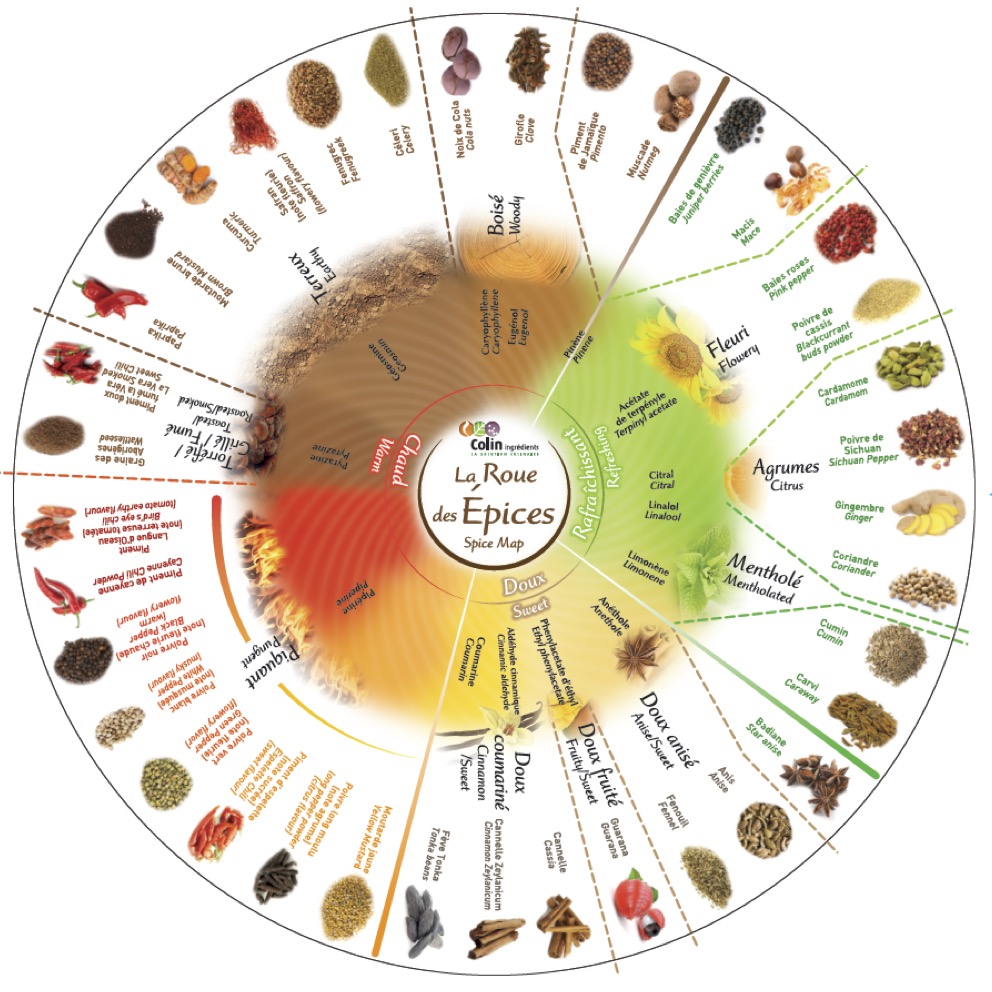A history of spices
The term "spice" is often used to describe a cigar in a rather generic way. And yet, the world of spices is practically infinite.
A rare commodity with magical or curative properties, the spice route has also played a major role in global economic development. Spices and aromatics were certainly among the first products to be traded between the three continents of Asia, Africa and Europe. Because of their high value in relation to their low volume, they were among the first products to be traded over very long distances.

Spice flavour wheel
Although spices play an essential role, the generic term 'spicy' is often used to describe a cigar. However, this term covers a vast range of aromas.
Spicy" is often confused with "piquant". The spice wheel below illustrates the diversity of possible flavours. When tasting a cigar, you can analyse your sensations: do you perceive peppery notes? A spicy heat similar to chilli, or an earthy touch reminiscent of turmeric?
Spices or herbs?
Spices and aromatics are often confused, but there are some notable differences:
Spices generally come from the dried parts of plants (seeds, bark, roots, bulbs, dried fruit). They are often used in small quantities to enhance the flavour of dishes. Examples: pepper, cinnamon, turmeric, cloves.
Herbs and spices are plants used mainly for their fresh or dried leaves. They add fragrance and flavour to dishes. Examples: basil, thyme, coriander, parsley.






